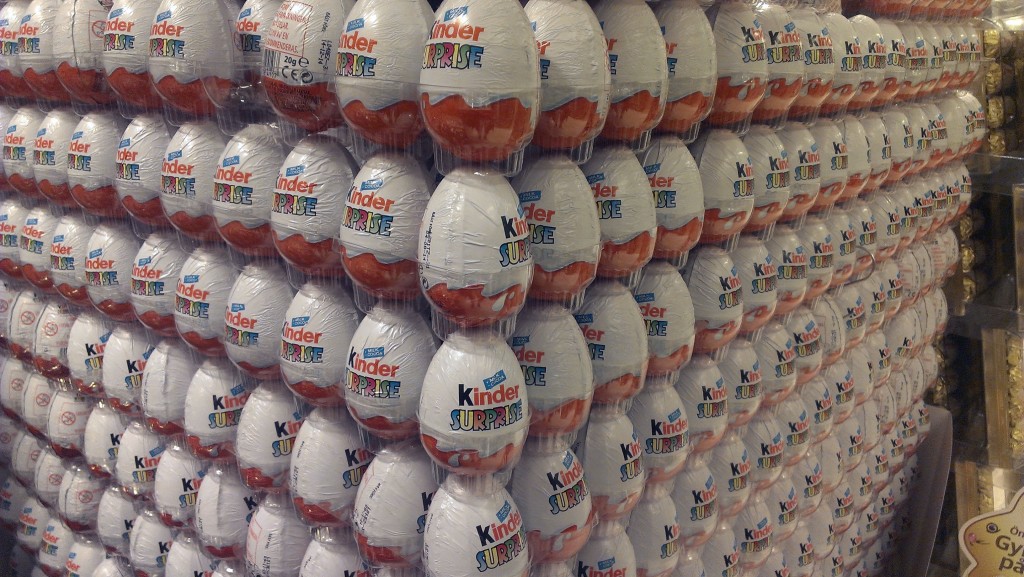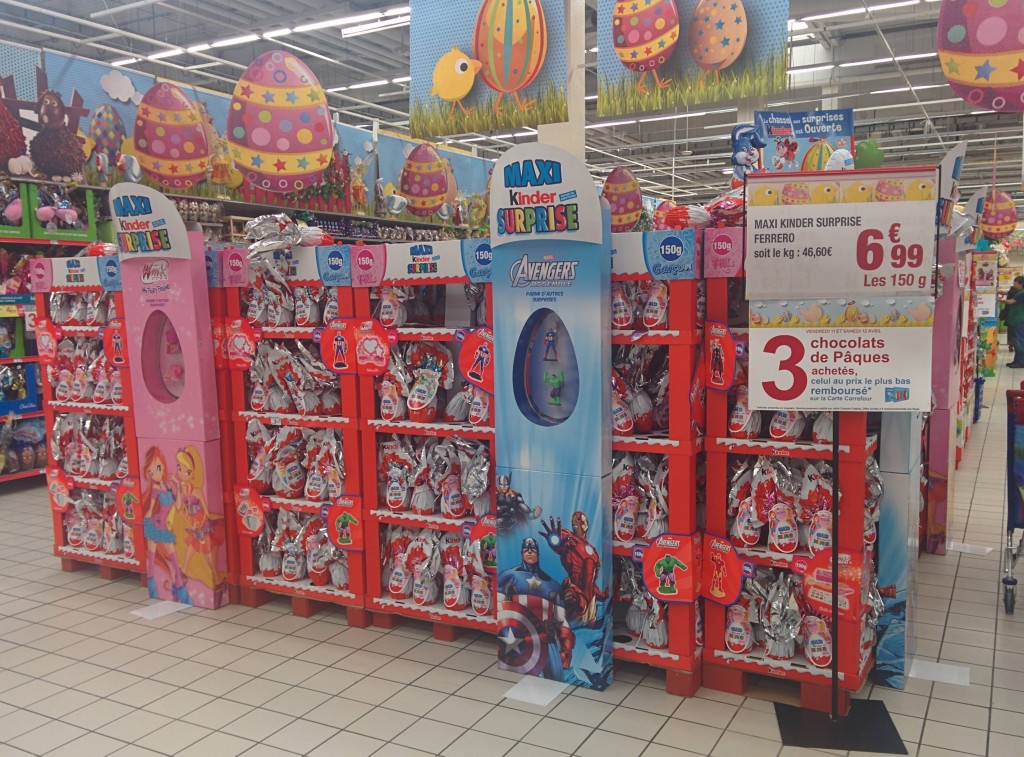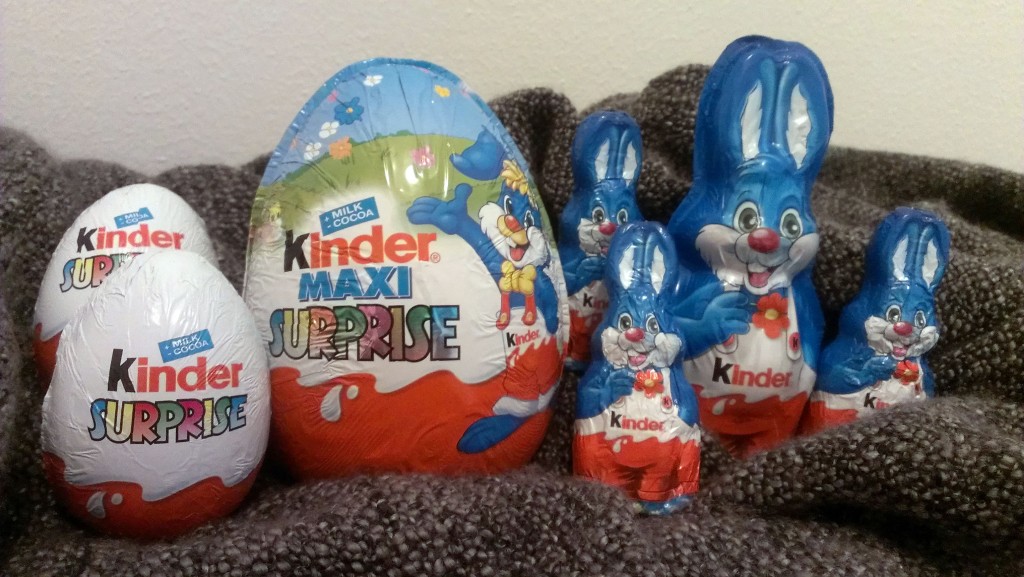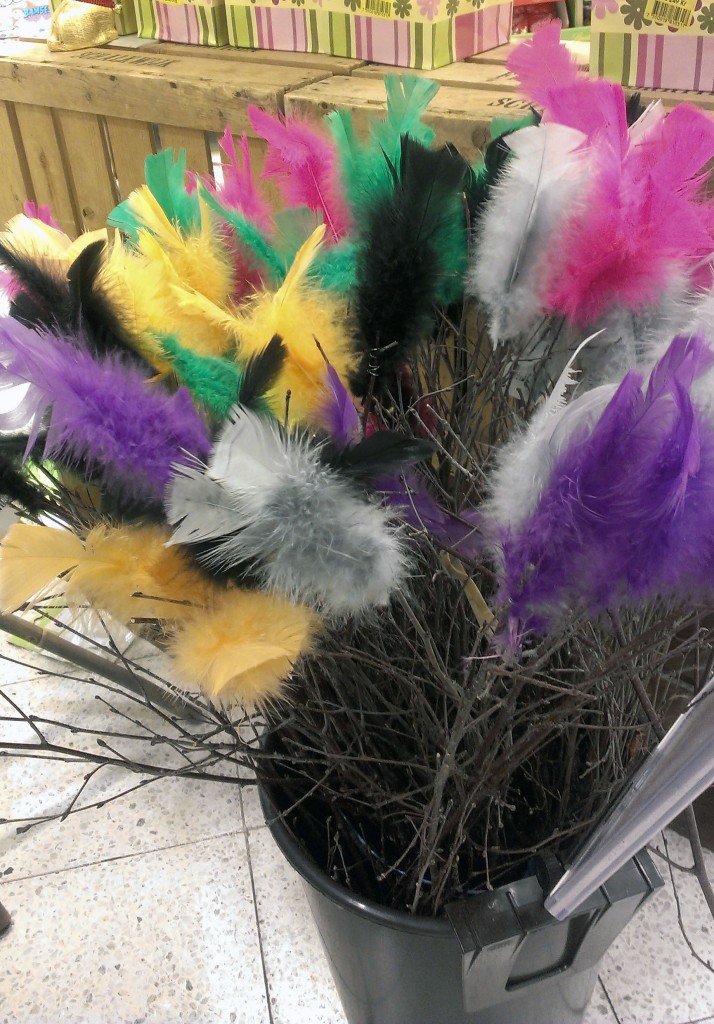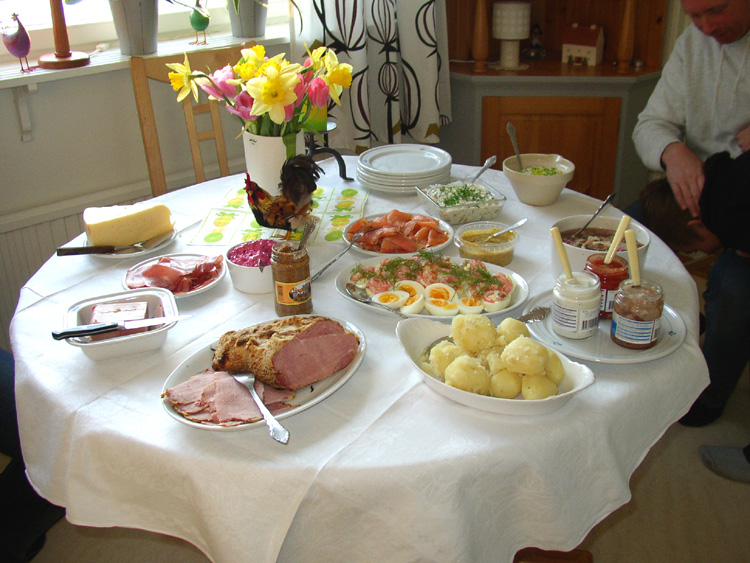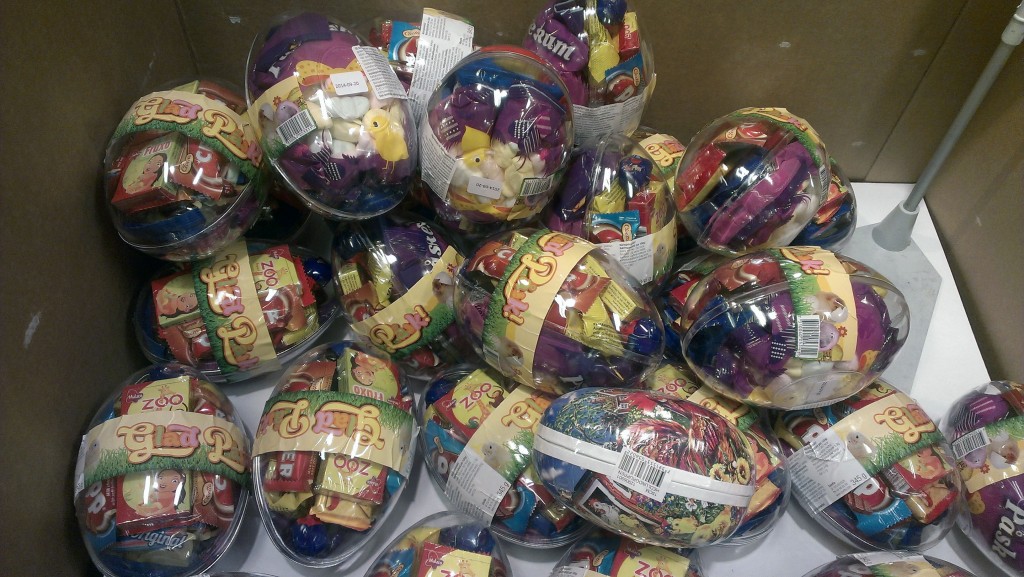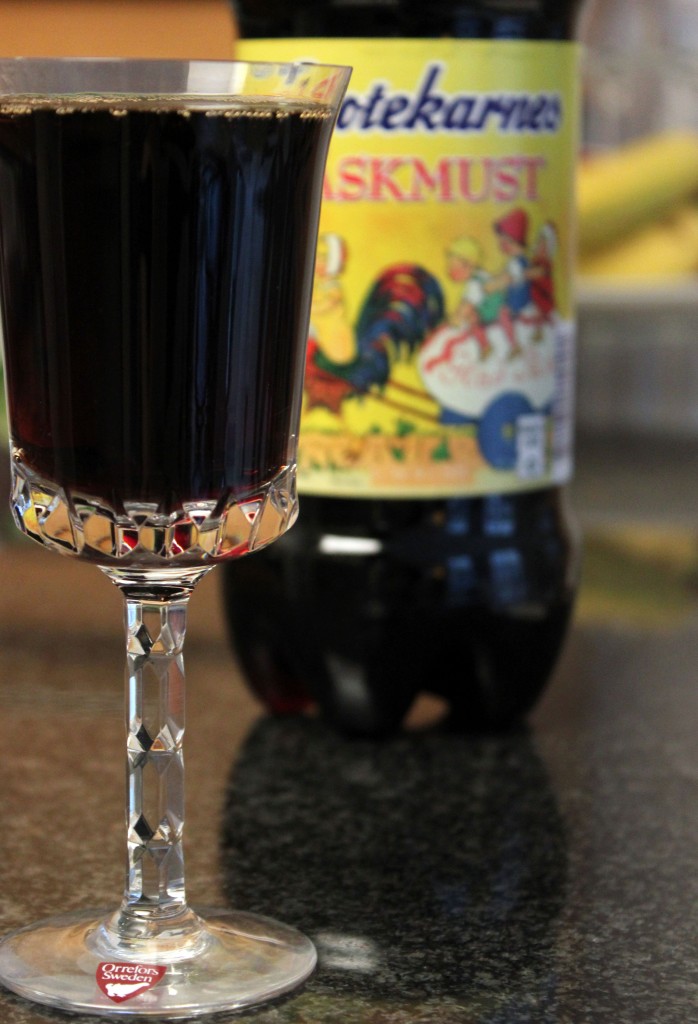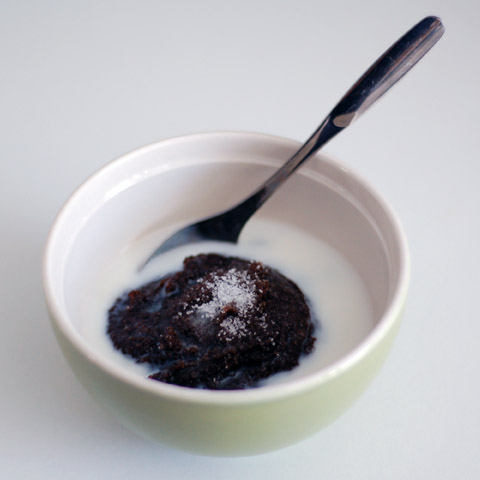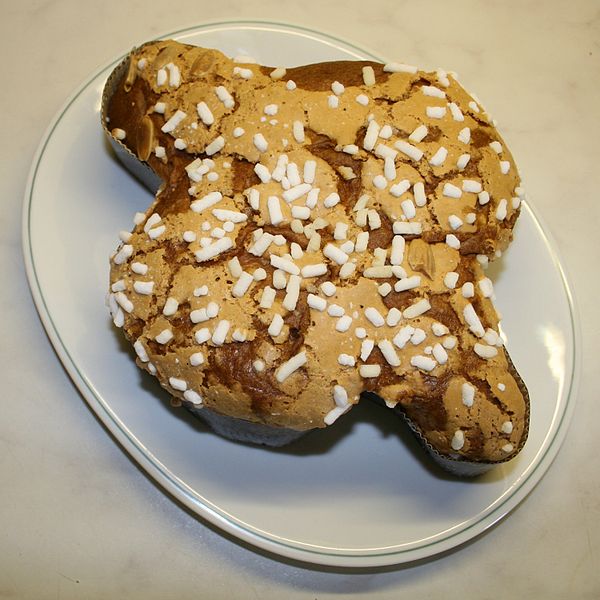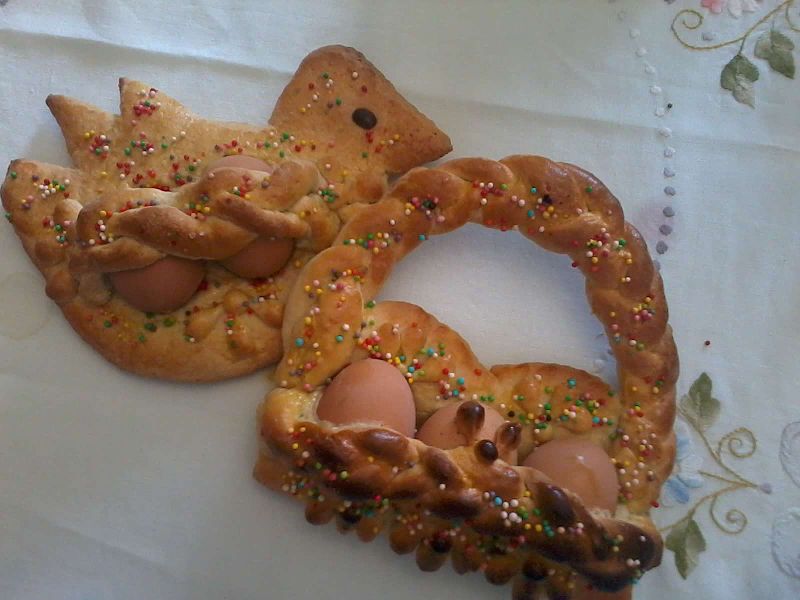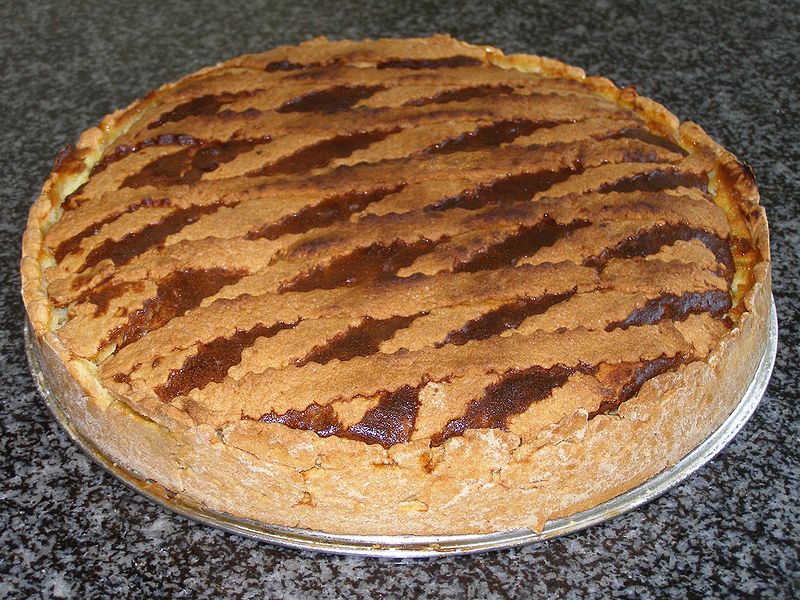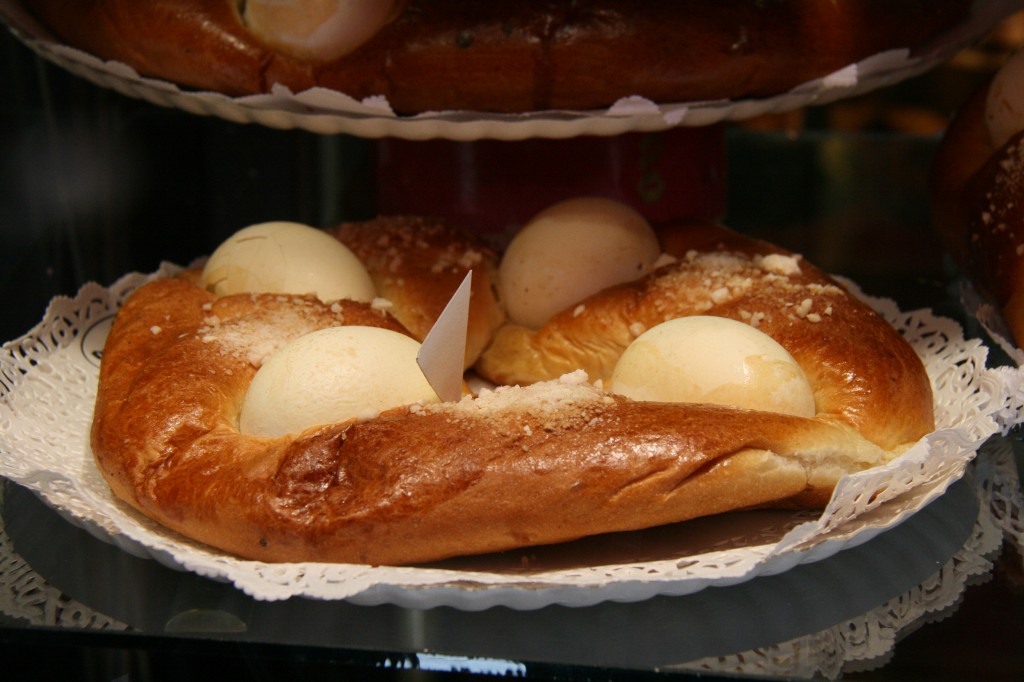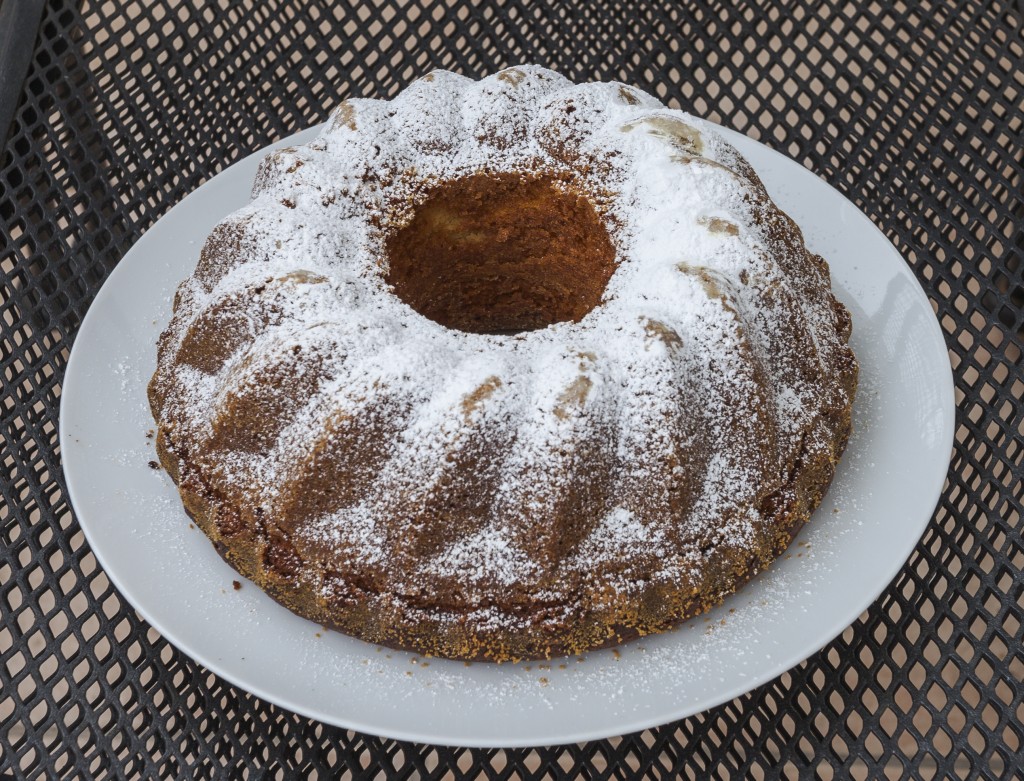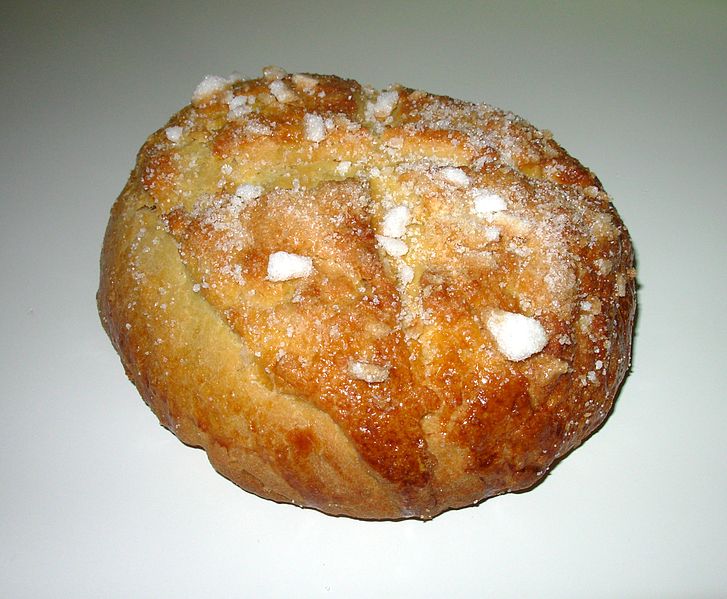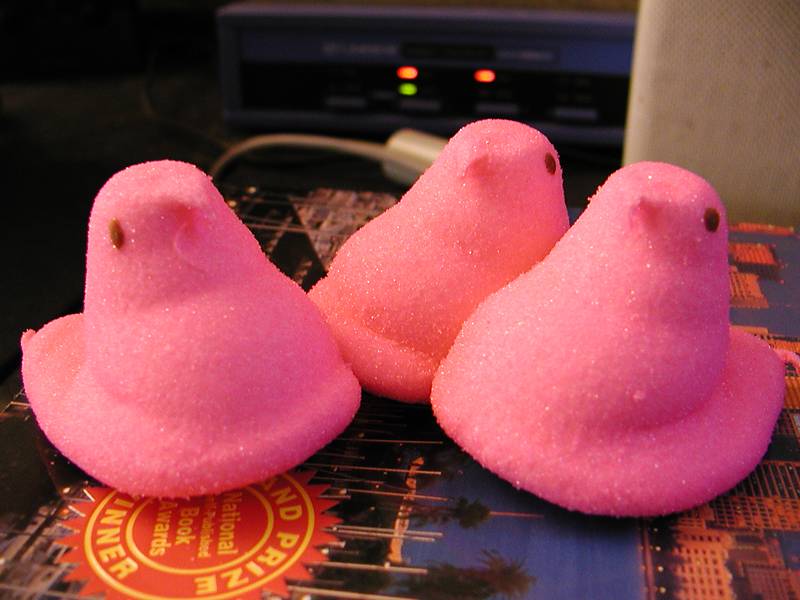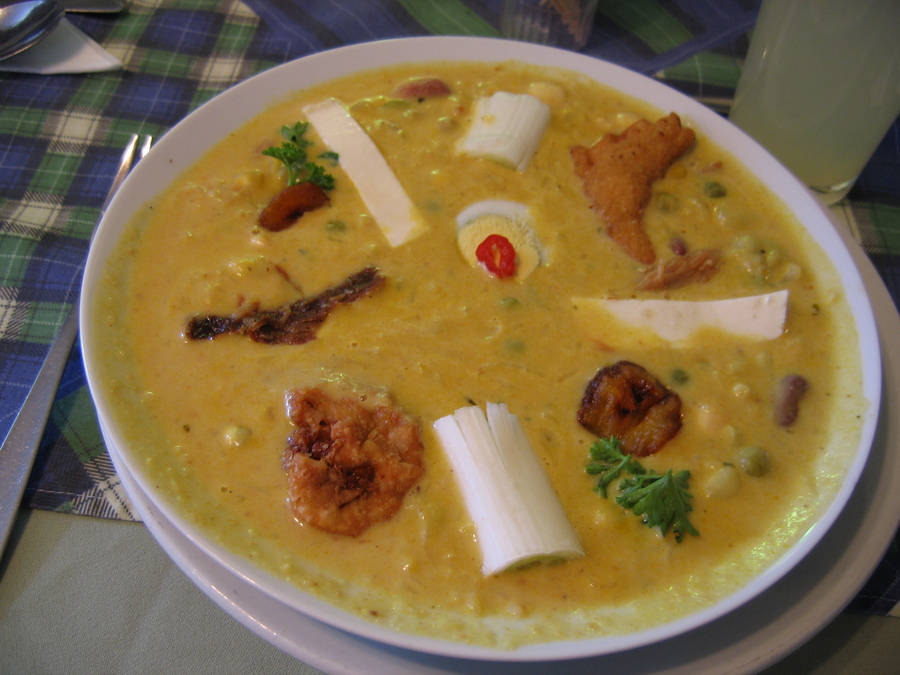My Swedish Easter disappointment (or "What people eat for Easter around the world")
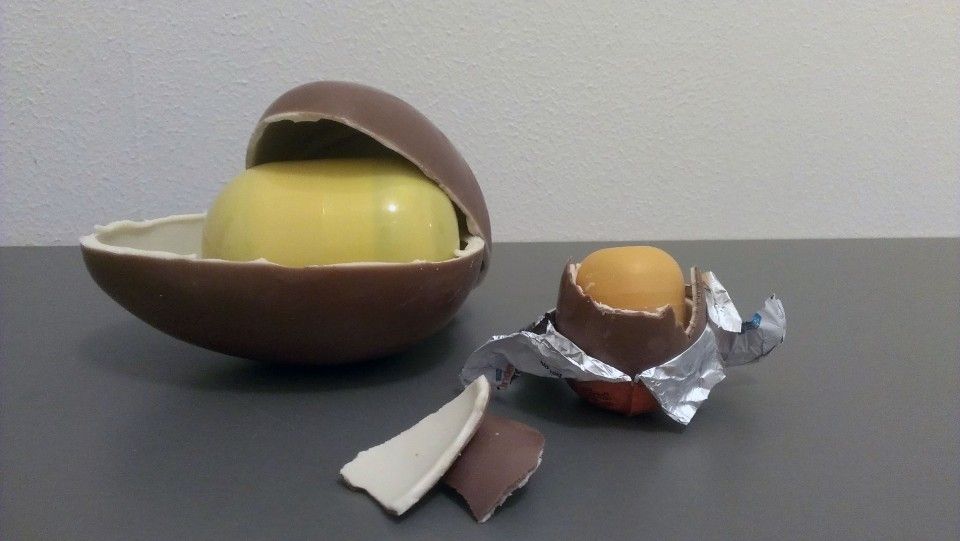
When I was a child, I would hunt for chocolate eggs in the garden for hours. I left childhood a long time ago. However, I haven’t quit on sweets and chocolate. Heretofore, my parents would buy me a Maxi Kinder Surprise every year for Easter. But since I moved to Sweden, I have been deprived of this guilty pleasure. Ok, I’m not going to praise the Kinder chocolate above all the high quality chocolate out there, but that’s not what this article is about. It’s about memories and nostalgia, and traditions. Don’t tell me you can’t mention any childhood food wonders, that still make you happy, although you know it’s not really that good. Two weeks ago, I was suddenly hit by a wave of that very nostalgia, and decided to treat myself with the well-known giant Easter chocolate egg, popular in the South of Europe. To my surprise, I couldn’t get my hands on any in the North.
The date of Easter is very complex to establish, it changes every year because of the moon’s cycles, and depends on the kind of calendar you refer to. But the traditions of Easter, depending on which country you look at, is maybe even more complex than that. Yesterday, I was preparing a simple salad when I noticed I was out of parsnip (recipe coming up soon). I ended up wandering around the supermarket and randomly encountered what Swedes call a “Maxi Kinder Surprise”, a 100 g egg that would feel ridiculous if it were to be compared with the ones I could find back in France.
I believe the nice authorities of Sweden want to prevent me from having an indigestion or type 2 diabetes. How thoughtful of them. I guess Sweden is progressive, I remember last year when the New York major wanted to ban huge sodas in an attempt to prevent people from getting overweight. Not only does such a ban not work, it didn’t pass the scrutiny by the supreme court of New York. But enough with the politics, let’s see how Easter traditions differ between different countries.
In France, Belgium, Luxembourg, and in the Netherlands, the church bells are silenced to grieve over Jesus’ crucifixion during the Paschal Triduum, the period starting on the evening of the Maundy Thursday. Children, when asking why, are told that the bells fly all the way to Rome for a little three days trip. Maybe I should consider moving to Italy, apparently there is some kind of huge chocolate supplier down there. Because on the bells’ way back to their home church, they make a detour through every family’s garden to spill chocolate eggs among the plants. On the morning of Easter’s Sunday, the church bells start chiming again, announcing the resurrection of Jesus and perhaps more importantly, if you ask the children, the apparition of chocolate eggs in the back yard. “Why eggs?”, you may ask. Because the concept of a chick out of its shell (or, nowadays, a shabby little puzzle coming out of a Kinder egg) perfectly represents the idea of Jesus emerging out of his tomb.
In the North East part of France, Germany, Austria, Switzerland, Brazil, as well as in the United States, the eggs are brought by a rabbit or a hare, symbol of fertility and spring. This tradition comes from a German legend: a penniless mother, unable to offer sweets to her children, decided to decorate eggs and hide them in the garden. The children, seeing a rabbit close to the eggs, believed that it had laid them. I guess that if one can make children believe that bells – huge chunks of metal – can fly hundreds of kilometers and come back with chocolate eggs, it’s not a surprise they can be convinced of a rabbit laying eggs. Anyway, children nowadays create a nest and place it in the garden, hoping that the Easter bunny (Osterhase) will fill it with eggs during the night. In Poland, I’m not sure I can remember having been looking for eggs. But I do remember getting a basket of eggs, and having the priest bless them.
Howbeit, it’s all different up North.
In Sweden, Easter is marked by the “Påskkärringar” tradition, i.e. “Easter witches”. Little girls and little boys dress up as witches, with long skirts and colorful scarves. They usually paint their cheeks in red with black freckles . Then, they go from house to house asking for sweets in exchange for a small child’s drawing, and the exclamation of the words “Glad Påsk!”. No, I am not talking about Halloween. The Swedish “Påsk” tradition originates in an old superstition; on Maundy Thursday, witches flew on their brooms all the way to the top of the hill Blåkulla (nowadays called Blå Jungfrun) to confer with the devil during the Sabbath. The witches are scared off with bonfires. Had this been the dark ages, the children would probably be burned alive. Instead, they get candy. In addition, Swedes decorate their homes with colorful feathers on branches called påskris.
Foodwise, Swedes traditionally organize an Easter buffet, a smörgåsbord, composed of multiple types of traditional Swedish holidays dish such as pickled herring, buckling, marinated salmon (gravad lax), lamb, creamed potatoes and eggs. If you’ve ever had a Swedish christmas smörgåsbord, you’ll recognize most of the dishes if not all.
The sweets are usually presented in big egg-shaped containers filled with marzipan, licorice, and marshmallow candies. Not very different from what Swedish kids eat on Saturday. Lördagsgodis (literally Saturday candy) is a common Swedish concept. Most Swedish kids are allowed to eat a bunch of candy only on saturdays, concentrating the vast amount of sweets to one day only. Kind of like Swedish alcohol consumption, drinking on a weekday at noon was long considered very strange. But consuming a whole week’s of alcohol stash, during a few hours on saturday, until you can’t stand straight – perfectly normal.
Swedes drink a lot of påskmust during Easter, a very sweet soft drink resembling root beer. All about it in my article about this very Swedish soft drink.
In Finland, the classic Easter desert is the mämmi. It is a cake wide with rye flour, powdered malted rye, molasses, and orange zest. The mämmi needs many hours of baking, and three or four days of cooling. Fins usually eat it cold with either milk or cream, or sometimes with vanilla sauce.
In Italy, people grill meat, and eat a dove-shaped candied fruit peels cake called colomba covered with almonds and pearl sugar. Just like with the julmust, the colomba is pretty much the exact same thing as the panettone served for Christmas, but comes in another shape under another name. Panettone/colomba, by the way, is a wonderful cake. I will cover it in a future post, but just to get your mind going… It’s a rich egg based cake traditionally leavened with natural spontaneous sour dough for several days.
The braided bun cuddura coming from Sicily is also commonly consumed food during Easter. It exists in both a savory and a sweet variety. The savory cuddura can be flavored with onion, sausage, broccoli, cheese, tomatoes, or salted anchovies. The sweet equivalent is spiced with cinnamon, and exists in several declensions such as the cuddura cull’uova, which has a full egg on the top, and the deeply fried in oil cudduredda.
The legend says that in Naples, a siren named Parthenope used to emerged each Easter to greet people, rejoicing them with her songs of joy. So melodious was her voice that all the inhabitants were fascinated. They would gleefully run to the sea, moved by the sweetness of the siren’s words of love . To thank her, the seven most beautiful women in the village had upon themselves to gift the siren with natural products: eggs, flour, ricotta, wheat grain, orange blossom, spices, and sugar. The siren placed precious offerings at the feet of the gods, who mingled them with their divine arts, thus forming the first pastiera. The pastiera is a pie stuffed with a mix of ricotta, candied fruit, sugar, eggs and wheat grains boiled in milk. The aroma and flavor vary. It all depends on spices and flavorings used during preparation, and the variations are endless. The classic pastiera is flavored with cinnamon, orange blossom water, orange peel and vanilla. Nowadays, the many recipes include goodness like custard and white chocolate. It is said to be so good that the second wife of King Ferdinand II of the Two Sicilies, whose nickname was the “Queen who never smiles”, couldn’t help smiling when she had a slice of pasteria.
The casatiello is another rustic and typical Easter dish that also takes is origins in Naples. It is a bread baked in wood oven. Its dough contain cheese, lard, and ciccioli (dried piece of pork fat).
In Spain and Portugal, the mona is a bun with one or more hard boiled eggs, whose shells are painted. The eggs are introduced as a decorative element, but can also help shape the cake. Several varieties exist, often taking the shape of an animal like a snake or a monkey. It can also be shape like a crown, in which case the bun is called a valenciana. Catalan mona has the base of a yeast leavened cake with custard, and chocolate or jam. This base is then covered with Catalan crème brûlée, decorated with almonds. We have diabetes right there, but wait, there’s more. The whole thing is served with an egg painted or wrapped in colorful paper. So we’ve got the proteins right there, a healthy snack, right? In Minorca , the mona is often covered with meringue. The real eggs are still very popular but tend to get replaced by chocolate eggs now days. On Easter Monday, families traditionally eat mutton chops, braised rabbit, and paella while drinking wine.
In Eastern Europe, the babka rum and candied fruits sponge cake finds its place of the family Easter diner table. It is usually glazed with chocolate or vanilla icing, or covered in sugar.
In Algeria, the traditional Easter cake is the mouna. Similar to the mona, the mouna is a yeast leavened dough made from flour, water and milk, to which you add oil, lemon juice, orange blossom, and herbal tea, anise or rum. Small balls of dough are then daubed with egg yolk mixe with milk. Some cakes may be garnished with a chicken egg. I’ll make one some day, and show you.
In Greece, there’s a tradition of painting eggs is red, as it is the color of the Christ’s blood. Beside this charming custom, people eat mayiritsa, a lamb and lemon soup, while drinking the anise flavored liquor ouzo. Other dishes are kokorétsi and spleenántero, both made from lamb’s entrails. In the Greek islands, people tend to prefer goat meat stuffed with rice, entrails, and several spices. Desert often consists of honey pies and tsoureki. It is a braided brioche sprinkled with nuts and almonds, and flavored with malhab, a spice made from cherry seeds. It can also be flavored with cardamom or mastic resin. A red egg is often placed on the top. Then there’s koulourakia, a buttery vanilla and sesame pastry sometimes shaped into a snake or a horseshoe. But to be honest, the traditional pastry of most southern European countries isn’t that much fun.
In Poland, a usual Easter breakfast consists in white sausages and mazurek. The mazurek is a chocolate cake decorated with nuts and dried fruits.
For diner, the Polish serve a soup called Żur which is made from soured rye flour and pork sausage, ham, of bacon. Sometimes, the ball the soup is served in is made of a loaf of bread. This can be eaten year round, but as in most other countries “ain’t nobody got time for that” except during holidays.
In the USA, the marshmallow and sugar bunnies and chick peeps are very popular for Easter, and often find their way into the baskets people offer to each other. Well, I guess peeps are consumed all year round. I’ve found myself stuck in a car jam, eating yellow peeps and Twinkies in the middle of summer. Until they took Twinkies off the shelves, that was a very sad story, but let’s continue with Easter…
In the UK and Ireland, families traditionally eat roasted lamb in Easter. For desert, they share a Simnel cake. It is a fruit cake topped with almonds and eleven marzipan balls representing Jesus’ eleven faithful apostles.
In the Ecuador, there is soup served every year for Easter: the fanesca. It contains hard-boiled eggs (eggs theme here too!), herbs, parsley, and twelves kinds of vegetables, grains, and beans representing the twelves apostles: zambo and zapallo (two different varieties of squashes from South America), ullucos (a kind of potatoe from South America), lentils, peanuts, peas, Lima beans, white beans, lupini beans, hominy (a dried Central American maize), red kidney beans, and corn. Everything is cooked in milk. . The twelve beans represent the twelve apostles of Jesus. Since the Catholic church prohibits red meat during the Saint Week, the soup is garnished with cod, representing Jesus. Sometimes, empanadas are also found in the soup.
So where were I? Oh, yes… The Kinder Surprise. What’s up with not having huge chocolate Maxi Kinder Surprises in Sweden during Easter?

